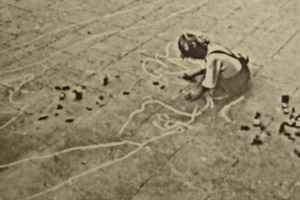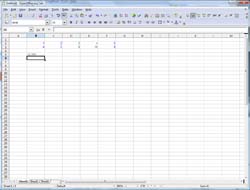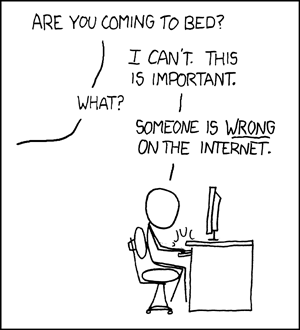A new and exciting GNOME version is out. Get it while it’s fresh!
I haven’t been able to contribute as much as I would like lately, just barely keeping www.pygtk.org not too outdated, but…
Arquitectura y técnica
A new and exciting GNOME version is out. Get it while it’s fresh!
I haven’t been able to contribute as much as I would like lately, just barely keeping www.pygtk.org not too outdated, but…

GNOME 2.28 is here now with new awesome. Read the full release notes here.
You can also read a bit more about future plans and a general overview about the direction GNOME is taking in an interview to Vicent Untz.
 Graphic and urban artist BLU uses walls as canvas for his/her beautiful, delicate and elegant animations and paintings.
Graphic and urban artist BLU uses walls as canvas for his/her beautiful, delicate and elegant animations and paintings.
I’m not surprised to see some of this work being shown in the Tate Modern in London, and, as an architect, I really enjoyed how the paintings/animations are spatially conceived and take into consideration the scale and relationship with their close environment. Working spaces are carefully selected, as one can see in BLU’s blog, so this subtle dialogue can be achieved.
Such a deep sensitivity to the surrounding environment hasn’t struck me very frecuently when faced to the majority of street art. Most of it is intrusive or plainly aggresive, in the mood of advertisements, and limit themselves to smart trompe l’oeil effects. They hardly ever come to play using their materiality as a mean to attach to their canvas, and could just have been painted in any other place, without ever potentiating or reacting to their spatial framework.
It’s also worth having a look to BLU’s website as the graphic design is very nice: clean and personal.
The following video was the one that attracted my attention:
MUTO a wall-painted animation by BLU from blu on Vimeo.
Another interesting urban artist worth knowing is SpY, which, through frequently subtle interventions on the urban landscape, brings to life and subverts the normal reading of our cities, much in the way of avant-garde, situationism.
Both BLU and SpY’s work look to me like an urban version of Land Art.
Some other street art artists which show some attention to the surrounding context in their works are Banksy or 108 (108 homepage).
 The OpenOffice spreadsheet application, calc, can be extended through plugins to support new functions that can be as easily used in cell formulas as the built-in ones.
The OpenOffice spreadsheet application, calc, can be extended through plugins to support new functions that can be as easily used in cell formulas as the built-in ones.
Being able to do this using my favourite language, Python, is possible, but not very well documented, so I’ve experimented a bit with it and have come up with a simple example that defines a bunch of new functions that take double and range arguments and return a single value or write back to a defined range. This example can be used as template to write your own plugins and is released under a GPL v2 or greater license.
The example has been developed using OpenOffice 2.4 running on Vista. To build it, you need the OO 2.4 SDK and a MSys environment to comfortably use makefiles and get a decent shell.
The extension file has in it all the needed files to rebuild the example. As the .oxt files are just zipped files you can get them renaming the extension file so it gets a .zip extension and unzipping it.
The makefile has some variables that point to the SDK dir and zip utility that you need to tweak and has the all and install targets build and install the extension.
Addins are composed by:
I hope this calc addin example is simple enough to get started. Enjoy!
As lately most of the news in the media around here are related to either the forthcoming general spanish elections or the U.S. ones, this comic strip made me smile a bit but also made me think about how our attitude shapes our lives in common, as a society:

Xkcd definitely rocks! 🙂
 These days, some people on the PyGTK mailing list have showed their disappointment with the apparent lack of support for GTK+ on the win32 platform.
These days, some people on the PyGTK mailing list have showed their disappointment with the apparent lack of support for GTK+ on the win32 platform.
As far as I can tell, the main problem lies in the lack of a convenient packaging due to lack of manpower, as the platform seems to build fine and win32 binaries are being offered, including all its dependencies.
The lack of good packaging probably hits harder on the bindings users, like the PyGTK ones, as they don’t need a C development chain but depend on a working GTK+ runtime and already have their own deployment problems to solve.
As either there’s not enough people interested in helping out with a more convenient packaging or the potentially interested ones don’t have the information, skills or time to join the effort, this post will try to gather some information that’s currently scattered around blogs, wiki pages or mailing lists in the hope that lowering the barrier to getting started can improve that situation:
mkdir windows-build; cd windows-build;bzr branch http://people.collabora.co.uk/~asabil/bzr/buildows ;cd buildows; ./buildows.bat file so you only need to copy the contents of the windows-build dir to a windows machine and run the .bat file to get the msi installer.
Alberto thinks the ideal solution would be the creation of msi installers. This allows easy mass deployments and gets good operating system integration, but while some of the needed tools (WiX) are open source, the toolchain isn’t (AFAIK), and being able to create the packages on a GNU/Linux box using cross-compilation and other native tools (wine/Mono/mingw) would be a great plus that would let GTK+ developers build their own win32 packages or the creation of GTK+ runtime packages using GNOME’s infrastructure.
We are sure that having a few motivated people willing to document the building and packaging process of gtk+ on windows can make a great difference here. Anyone is willing to scratch this itch?
Update: Alexander Shaduri is currently publishing an updated gtk+ runtime installer, a theme selector and a collection of themes within the gtk-win project on sourceforge. It can be downloaded here, as well as the NSIS configuration packages.
Update 2: Ali Sabil‘s buildows script is based on jhbuild. It fully works on a GNU/Linux box except for the last packaging step as WiX runs native code and he hasn’t got it to work using wine (he tried using a native dll under wine but couldn’t get it to work).
Update 3: There’s now a wiki page on live.gnome.org to collect all the relevant information about windows GTK+ packaging and the desired goals and a new chat room on gimpnet called #win32.
This is the latest xkcd comic strip. Yay!
One of the things I love of being an architect is the opportunity to see and enjoy unusual and even hidden views…
Last week I visited Toledo, as part of an ongoing contract, where I’m doing the structural engineering evaluation and consultancy for the rehabilitation of an old building. This building is very interesting, as some of its parts date back to the XI century, with some additions from the XV century, and minor ones later on. Besides that, it’s structure is a frankenstein like mix of masonry walls, timber frames, wooden columns and beams, earth walls and even some recent steel parts.
List of some nice Thunderbird and Firefox addons I currently use, both on GNU/Linux and Windows:
Firefox:
Thunderbird:
Today my cousin Manuel sent me a youtube link pointing to a sketch for an humoristic TV show he and some other talented people are creating. The gags reminds me of those from Monty Python. Bright and acid, criticizing some of our worst defects as a society by looking at them through a surreal glass. It really made me laugh and think.
Even if I’m clearly biased in favor of anything this cousin creates, he, and his team, have already showed their talent before approaching this new challenge in a number of theater and TV plays and scripts, besides his role as theater and short film director. I hope they continue to nurture and develop their artistic vein (and a TV channel buys them the sketches).